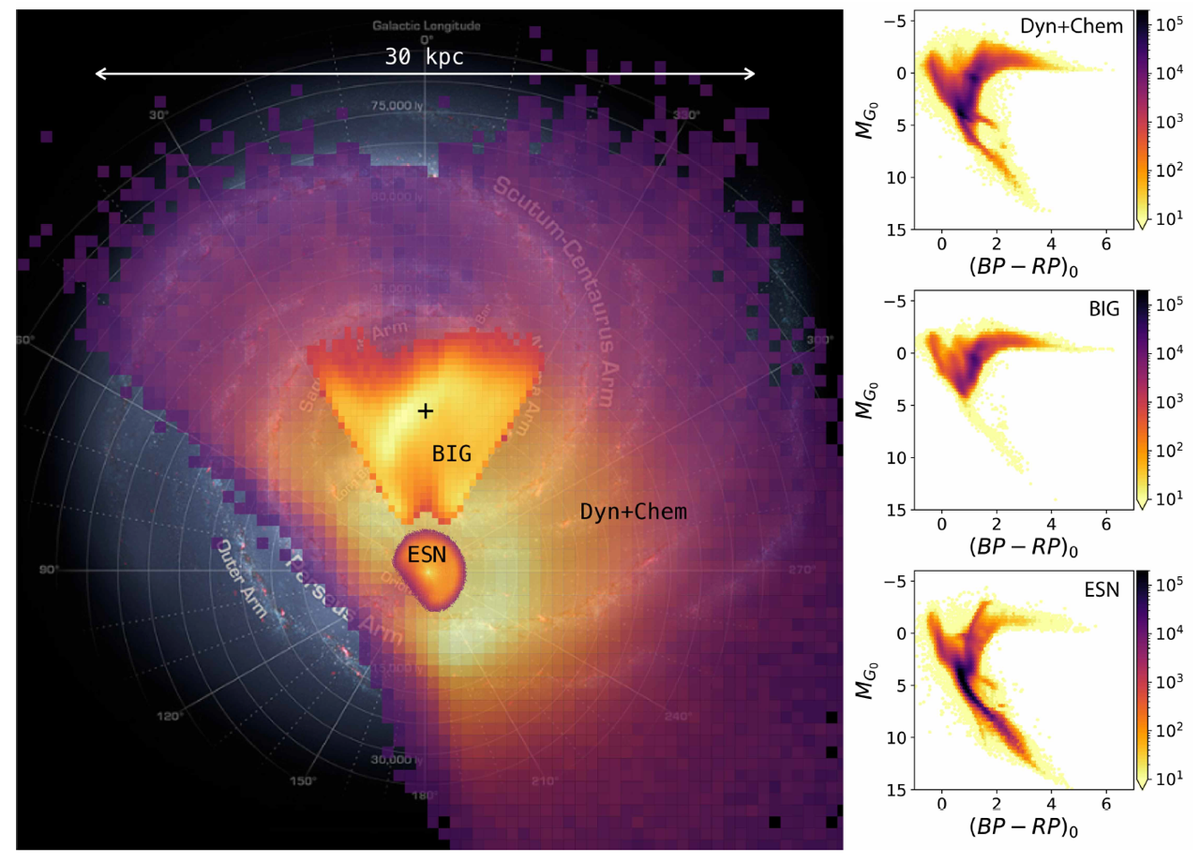4MIDABLE-LR
The formation and evolution mechanisms of the Milky Way are encoded in the orbits, chemistry and ages of its stars. With this 4MOST survey we aim to study kinematic and chemical substructures in the Milky Way disk and bulge region with samples of unprecedented size out to larger distances and greater precision than conceivable with Gaia alone or any other ongoing or planned survey. We aim for spectra for at least 9.0 million stars, with high enough S/N ratio to also extract chemical information for at least half of the sample. Gaia gives us the unique opportunity to select targets based almost entirely on parallax and magnitude range, hence increasing the efficiency in sampling larger Milky Way volumes with well-defined and effective selection functions. With the Low-Resolution Spectrograph (LRS) of 4MOST we can study the origin and evolution of essentially all the dominant stellar components of the Milky Way: the chemically and structurally defined thin- and thick disks, and the bulge/bar. The area covered by 4MIDABLE-LR will be large enough to also enable the first comprehensive study of the disk/bulge-, disk/halo-, and bulge/halo interfaces — the latter two in collaboration with the 4MOST Milky Way Halo LR Survey. Our main goal is to provide a detailed and extended chrono chemokinematical map of our Galaxy. This largest spectroscopic follow-up survey of Gaia, down to magnitude G=18, will facilitate an unprecedented exploration of the stellar disk and bulge of the Milky Way.
4MIDABLE-LR will provide the largest spectroscopic follow-up of Gaia (adding key information to the Gaia RVS) and thereby allow us to view the Milky Way as a whole stellar system by providing a detailed 3D chrono-chemokinematical map of the Milky Way stellar disk and bar-bulge. We shall provide the most complete volume coverage, especially of the inner Galactic regions, complementing the near-IR APOGEE-South, MOONS and the SDSS-V surveys. APOGEE has been key in tracing the disk chemo-dynamical history with targets very close to the mid-plane, but the coverage of the inner-most regions is still inadequate for disentangling this complex region of the Milky Way where different populations co-exist. SDSS-V promises larger volume coverage than APOGEE very near the disk plane, thus, fully complementary to what is delivered by 4MIDABLE-LR. Finally, our careful target selection also covers the disk-bar-bulge and disk-halo transition regions which are crucial in reconstructing their chemical and dynamical evolutionary histories.
The objective is to produce comprehensive chemo-kinematical maps, which will be used to:
- Better understand the current Milky Way disk structure and dynamics (bar, spiral arms, vertical structure, stellar radial migration, merger history)
- Better constrain the formation of the Milky Way bulge/bar using both chemical and kinematical information, as well as spectroscopic stellar distances and ages using machine learning methods supported by high-quality training samples
- Study the inner disk/bulge and disk/halo interfaces by simultaneously covering a large volume, and ensuring high-quality chemical and kinematical information
- Quantify the impact of secular processes, as well as the merger history on our Galaxy’s assembly
- Recover the evolutionary history of the disk
- Further expand the legacy of Gaia with complementary radial velocity and chemical information.

Large panel: Galactic density distribution for the targets in the 4MIDABLE-LR main sub-survey catalogues (colors are in logarithmic density, normalized for each catalogue). Targets were selected from Gaia DR2 based on the parallax probability density distribution and within a specified magnitude range. The distances are from StarHorse (SH - see Anders et al. 2019, flag-cleaned). Small panels: CMDs for each of our main sub-catalogues: Dyn+Chem (top), BIG (middle) and ESN (bottom) where the color represents target densities. These are not flag cleaned and still contain stars with large uncertainties, but they illustrate the success of our target selection. The final target selection will use the Gaia DR3, and therefore we expect much improved CMDs. Gaia give us the luxury of having the information collected in this figure before the start of the survey, enormously improving the efficiency of spectroscopic surveys to the study of the Milky Way Galactic archaeology.
Credit: 4MIDABLE-LR teamInvolved AIP sections and groups:
Milky Way and the Local Volume, Dwarf Galaxies and the Galactic Halo, Supercomputing and E-Science